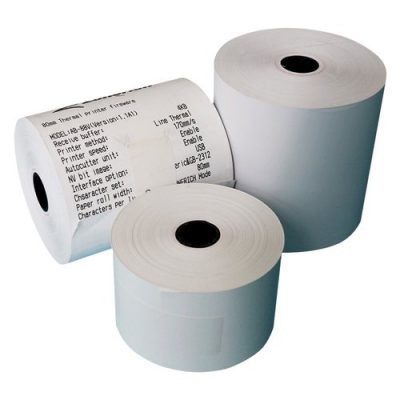Project Report For Thermal Paper Roll
Introduction
Project Report for Thermal Paper Roll is as follows.
Thermal paper is a fine paper that has been coated with a material that changes colour when exposed to heat. Thermal sheets are widely used in a variety of industries, including airline tickets, petrol stations, motels and retail establishments. Thermal paper rolls are now widely available and economically priced; they are around the same price as regular paper, but they are already used on a daily basis by many businesses.
Thermal paper is a type of heat-activated specialty paper that changes colour when heated. Heat-sensitive dyes and developers are used to manufacture this material. Depending on the producer, these dyes and developers are applied in various ways during the production process. However, all thermal papers share some processing characteristics.
The thermal paper begins with a standard “base paper” made of wood pulp. After that, the paper is prepared with a chemical known as the precoat. The precoat closes any holes or gaps between the paper fibres. The precoat ensures a smooth and equal printing surface. Once triggered, this molecule absorbs and stabilises the dyes. The precoat also prevents melted colour from collecting on the print head.
Project Report Sample On
Thermal Paper Roll
Get Completely Custom Bankable Project Report
The thermal coat refers to the chemical mixture used as a topcoat. This coat is made of compounds that change colour when heated. Leuco dyes, sensitizers, and developers are present in the thermal layer. The leuco dye comprises transparent crystals that turn black when the printer heads’ heat touches the paper.
The thermal mixture also contains bisphenol A (BPA) or bisphenol B (BPS). These compounds function as builders. To modify the image activation temperature of the coating, sensitizers are added to the thermal mix. After the layers are applied to the paper, it is rolled into huge rolls known as jumbos. The jumbos are then fed into machines that shred them into smaller pieces for wholesale and retail distribution.

Benefits of Thermal Paper Roll
Cost-Effective :- Thermal paper rolls are available in a variety of grades and lengths because they are created in diverse ways. Length and size are usually addressed during manufacture. Because paper substitutes the core, a similar-sized paper roll without a core may be larger in length. That is, a 10mm core, which is smaller than the standard core size of 12.7mm, results in a longer paper length. The absence of a core provides additional surface area for the paper to occupy.
Save space :- When ordering bulk paper rolls, getting the same length in a smaller diameter saves space. For example, ordinary thermal paper with a length of 80 metres and a diameter of 80mm with a plastic core of 12.7mm to 77mm in diameter without the core can be cut down to 77mm in diameter without the core. This reduces carton cubic space.
Easy to Maintain and Extends Printer’s :- Thermal rolls are simple to maintain and install. It is frequently unnecessary to remove the old core before installing a new one, which saves time. Furthermore, coreless paper avoids dust buildup on the print head, resulting in high-quality print production.
Market Potential of Thermal Paper Roll
Expenses

Product Cost Breakup

Reveneue Vs Expenses

Market Trend

The worldwide thermal paper market was valued at USD 4.02 billion in 2020 and is predicted to increase at a CAGR of 5.2 percent from 2021 to 2028.
The increased necessity for labeling/providing a detailed description of components in the food and beverage and pharmaceutical sectors to combat adulteration is also expected to fuel product demand. Furthermore, the growing usage of Radio-Frequency Identification (RFID) tags in the healthcare industry is expected to be a significant driver of industry growth in the foreseeable future.
The rising usage of POS terminals in warehouses and retail establishments is expected to enhance demand for thermal paper. Improved government policies and rising domestic consumption of pharmaceutical, food, and beverage products in South Asia are expected to offer a favourable business environment for the advancement of the thermal paper industry.
The presence of paper makers in nations such as China is expected to enhance the thermal paper industry’s growth. However, as the transaction process becomes more digitalized, need for thermal paper for POS terminal printing is dwindling. Rising e-commerce usage, on the other hand, is predicted to drive up demand for thermal paper in the form of labels and tags.
